Interview by Zhenjie Dong
Du Yang is a female photographer based in Beijing. Graduated from Beijing Film Academy, her work is filled with dreamy, poetic narrative that is greatly influenced by film. Her work is closely related with the unexpected nature of life “You can sense the reality of life in these photos.” Du Yang wrote in her statement, “They record encounter and departure, leaving and returning, love and fight, the smell of rain and dust. No matter the pictures are crappy or beautiful, those experiences are all real.” Her works and her self-published books have been shown in many exhibitions and book fairs in China, Europe and Japan.

It is interesting that you start literature as your major and end up becoming a photographer. How do you start photography and how does literature influence your photography?
I started taking photos since I was in high school. It lasts as a hobby ever since and becomes my profession now. I study Literature of Theatre Film and Television in Beijing Film Academy. I took a lot film-related courses and shoot short videos. The experience of learning film has a great influence on the form of my photographic style. For example, I learned that every single frame of the movie is carefully designed. Every detail from the set, lighting to color tone should reflect the mood and emotion of the character at that moment. The picture is externalization of the inner character. When I take photos, I will unconsciously adapt the filmmaking method. I believe photographs tell stories. The “stories” are not only the messages from the image, but more importantly they arouse imagination beyond the image itself. Finding the relationship between picture and narrative has always been my interest.
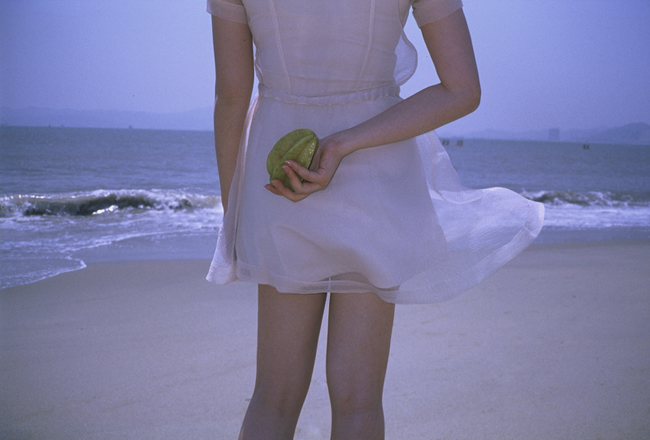
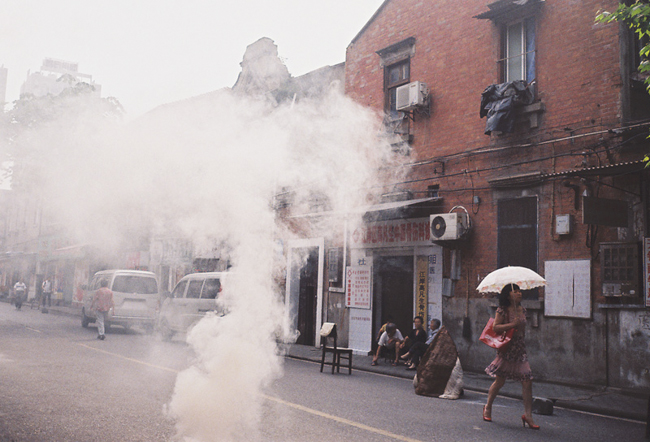
If we compare your photography style to a type of literature, what will it be?
I prefer to call myself a poet. Comparing with telling a story, I prefer to capture many unrelated abstract moment/fragments, think of how to put them together and build relationship between them in the process of editing. Each word has its own meaning but when you put them together, it makes a new meaning. It is the same with photography. Sometimes I feel editing is more interesting than photographing itself.
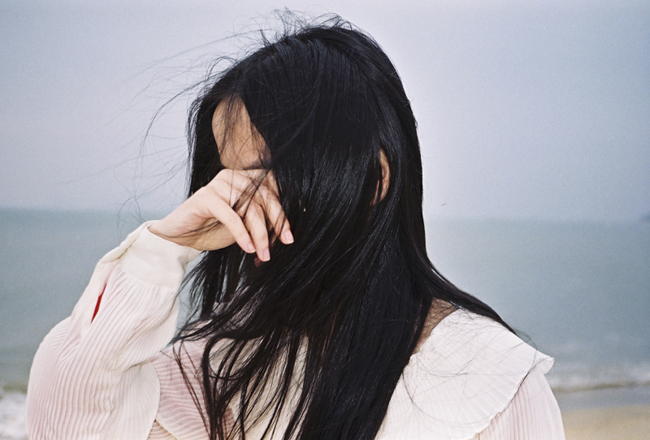

What are your inspirations?
My inspirations mainly come from my observation of life and nature. I am influenced a lot by Japanese artists. I focused on the study of Japanese culture while I was at school. The emptiness and unspoken tranquility in Japanese aesthetic is very fascinating to me. Another thing, which I figure out recently, is that I grew up by reading Japanese comic books. The storyboard and rhythm of comic books actually have a lot of things in common with film. The presentation of atmosphere and mood in some comic books are very appealing, which more or less have an impact on me. I still think comics are a neglected art form.
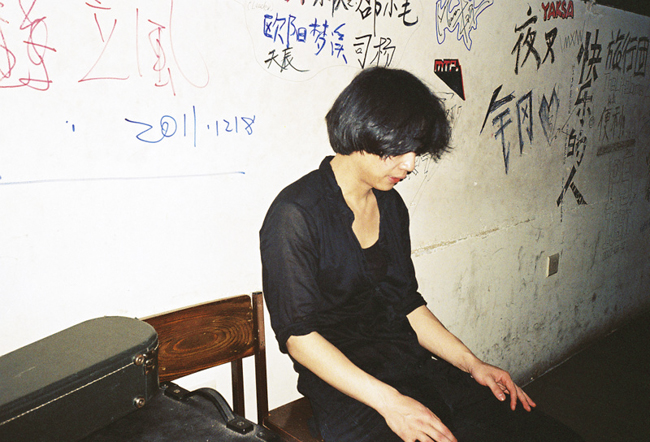
Are there any particular artists that influence you?
Rinko Kawauchi and Yoshihiko Ueda give me a lot of inspirations. Their works present unique views of the world and understanding of life and death.
You seem to have several ongoing projects at the same time. How do you start your project and what is your creative process like?
My way of shooting is very casual. I bring camera with me when I hang out and shoot things that interests me. I scan them, divide them into different themes and figure out how to edit and sequence them. In this process, I gradually find the common points of interest in the photos that I choose. Through the photos I take, I gain a better understanding of myself. I am more and more clear about what I truly like and want to express.

It is interesting that you work backwards to find your intention through the photos you took. What do you truly like and want to express then?
It is hard to articulate. I am always intrigued by the mystery of nature. Just as Einstein said, “We see the universe marvelously arranged and obeying certain laws, but only dimly understand these laws.” I bring this thought to find the scenes I desire to shoot. On the other hand, daily snapshot is also my favorite way of shooting. We are easily overwhelmed by trivia and habits. Photography helps us regain the perception of life.
You photographed a lot of girls. What is the relationship between you and your subjects?
Most of the girls in my photos are my friends. Young girl is a creature that, as most of the mysterious things in nature, is beautiful and powerful with perishable sentimentality.

What do you intend to express in project Tinnitus?
Tinnitus is a snapshots series that I shoot on 135 films. Different from the more constructed works shot on 120 films, these snapshots are full of random and uncertainty. They are the unexpected noises in life. Sometimes after the films are developed, I find things that I did not notice during shooting. The feeling of out of control is very interesting.

You made two photo books. Hometown Book has a lot of interesting handmade details, while the design of Bygones is more minimal, with diptych of portraits with still life. What is your thought behind the design and how do you edition your photo books?
Bygones is the first indie photo book I made. The photos are all square format, so I decide to weaken the sense of design and use the layout that emphasizes the photos themselves. In the process of editing and sequencing, I try to find connections between portraits and landscapes, constructing my own “imagined geography.” For Bygones, I made limited editions (100 copies). It sells pretty well. I might print more for the next photo book.
Hometown Book is made for Hometown project organized by Ofpix, a documentary photo studio in China. I put a lot of my personal emotions about my hometown and childhood into this book. They are shown by words, plants, childhood toys and even little notes that I and my classmates used to pass in junior high school. Compare to published books, handmade books have more possibilities in terms of presentations. It is more three dimensional, like sculpture, above which I can sculpt freely.

How do you think of self-publishing?
Like many photographers, I use photo books as a way to sort and summarize works of a certain period. After all, viewing photos as prints is very different from viewing them on the screen. I think self-publishing is becoming a trend.
How do you promote your photo book and works?
I sold my photo books through social media as well as some indie book stores, which get me chances to showcase my books in book fairs all around the world.
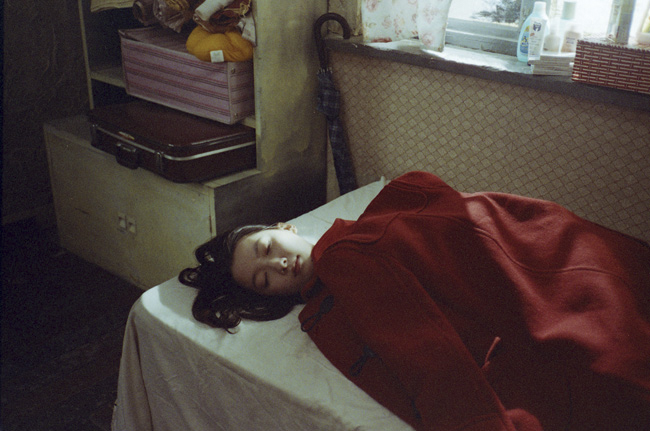
You work as a photographer now. How do you balance your artistic creation with your job?
I shoot for clients as well as making personal works. I try to find a certain connection between them. I do not do things that I do not believe in—this is probably the only way to maintain the realistic life.
What is next?
I am working on a new project trying to combine photography and literature together. I also want to try different types of works, such as shooting on set or working in other fields.
To view more of Du’s work please visit her website.
Zhenjie Dong is a Chinese artist exploring ways to express her social and political concerns through photography. She spoke at TEDxCreative Coast 2012 about her work Recreating Myth and the philosophy behind it. Her works have been exhibited in the Atlanta Photography Group Gallery and the North Carolina Museum of Art. Her video work Illness has been shown at Lumen Prize moving Image Art Festival in Hong Kong. And her work is part of the global tour of the Lumen Prize Exhibition, travelling around the world in United Kingdom, Latvia, China and Wales.